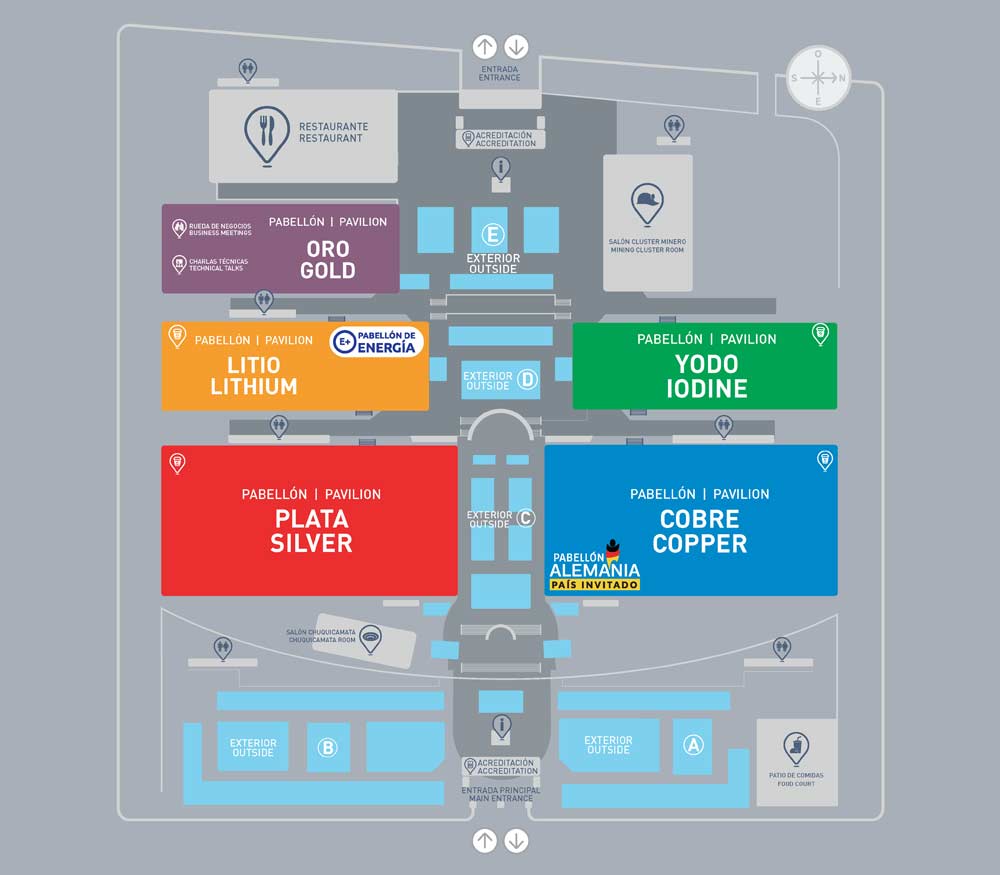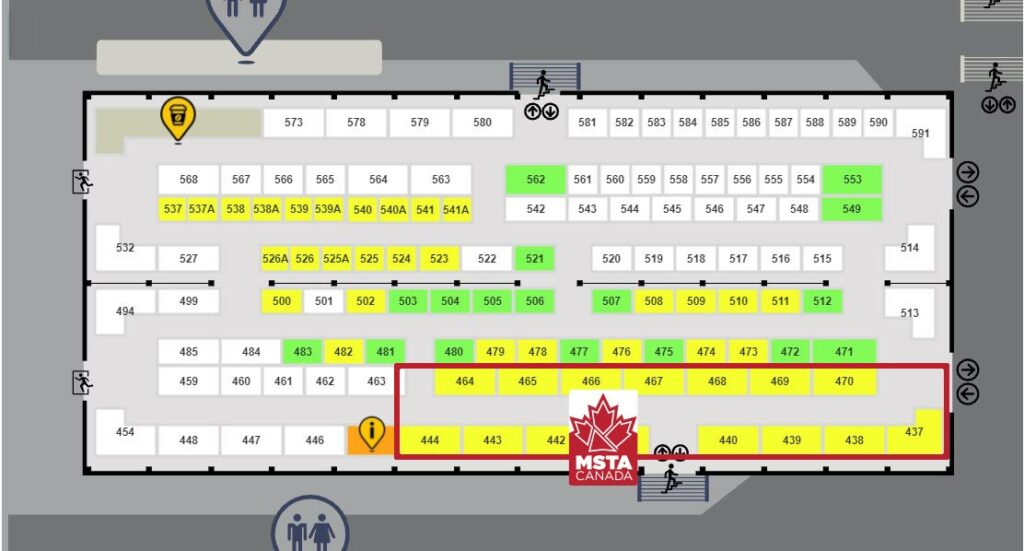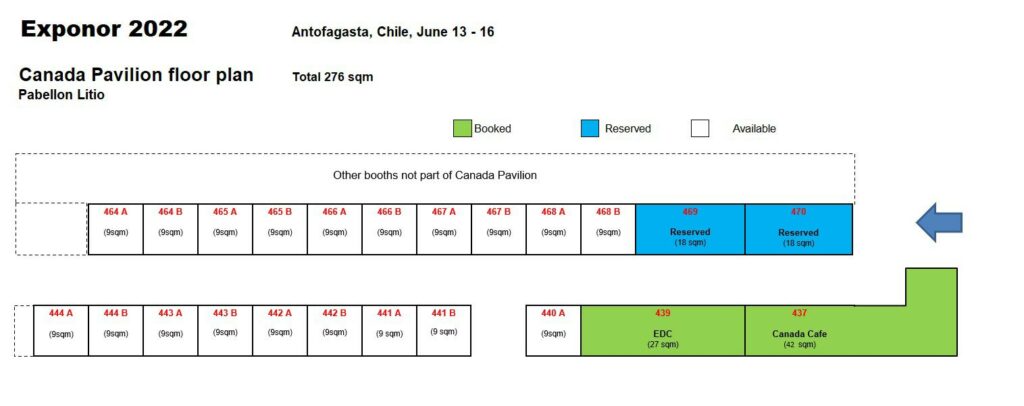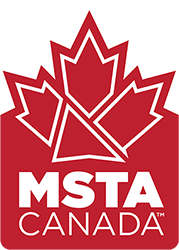Interim Recommendations on Preventive Measures for the Mining Industry
April 13, 2020
COVID-19 Preventive Measures in the Workplace
These measures apply when sustained community transmission has been confirmed by public health authorities.
Preamble
Any resumption of non-essential services must be carried out in such a way as to control the transmission of COVID-19. It is of paramount importance to avoid a significant increase in the number of people infected, hospitalized or in intensive care, and of deaths.
A number of conditions must be respected to ensure the control of COVID-19 in Québec. Failure to comply with these conditions could lead to a significant increase in the number of cases and thus potentially to reconsideration of the strategy for reopening workplaces (number and type of workplaces, required distancing and protection measures) aimed at re-establishing an equilibrium and ensuring the sustainability of the health care system. These conditions are set out here: Conditions necessary for the maintenance of essential services and the gradual opening of other workplaces (in French only).
The preventive measures recommended by the government for the general population and the basic recommendations for all workplaces also apply in the mining sector, unless more restrictive measures are specified.
• https://www.inspq.qc.ca/publications/2911-mesures-milieu-travail-covid19 (in French only) Special attention must be given to pregnant workers and workers with specific health conditions. Please refer to the following recommendations:
• https://www.inspq.qc.ca/publications/2914-protection-travailleurs-immonudeprimes-covid19 (in French only)
• https://www.inspq.qc.ca/sites/default/files/publications/2967_protection_travailleurs_sante_maladies_chroniques.pdf (in French only)
• https://www.inspq.qc.ca/en/publications/2919-workplace-pregnant-workers-covid19
Particularities of work in the mining industry during a Coronavirus pandemic
One of the main challenges associated with the resumption of mining operations is that many companies employ outside workers (from outside the city, the region and even the country). Some companies use fly in/fly out or drive in/drive out or trains to bring outside workers to the workplace. It should also be noted that a number of mining operations are located in regions that are under closure (e.g. Abitibi, Côte-Nord, Nord-du-Québec). Outside workers are usually housed in facilities with common areas (eating areas, rest areas, washroom facilities and room sharing). These conditions can promote the transmission of viruses.
Prolonged interactions (during work activities, in accommodations) between workers from different regions of Québec, where the rate of transmission can vary (from low to high), are conducive to outbreaks in the workplace and possibly also in the workers’ community of origin, taking into consideration the incubation period, pre-symptomatic transmission and cases of asymptomatic transmission.
Also, the fact that the majority of mining operations are located in remote or isolated areas should be considered. The ability of such communities to test for COVID-19, to manage COVID-19 cases that would require care, to adhere to isolation guidelines, and to evacuate people when necessary may be problematic. For information about the impact on the regional community or communities of reopening a workplace, please refer to the public health authority of that region.
To protect the health of employees and others in the workplace, employers and workers are asked to:
1) Adjust work methods and schedules to encourage respect for the directives applicable to employees in mandatory isolation (teleworking) and to those with other constraints (flexible hours, teleworking).
2) Advise workers not to come to work if they present symptoms suggestive of COVID-19 (fever or cough or difficulty breathing or sudden loss of sense of smell or taste or other symptoms that may eventually be added to the list at the following website: https://www.quebec.ca/en/health/health-issues/a-z/general-information-about-coronavirus/):
• If a worker begins to experience symptoms in the workplace, have a procedure in place to:
• Isolate the worker in a room while waiting to return the worker to their home or their quarters (FIFO-DIDO).
• Have the worker wear a procedural (or surgical) mask if available or other face cover. If the worker is wearing
an RPD at the onset of symptoms, they may keep it on until isolated.
• Call 1-877-644-4545.
• For FIFO-DIDOs, have a plan for evacuating in accordance with the recommendations received at the COVID
phone line (1-877-644-4545).
• Identify contacts at high or moderate risk and isolate them until test results for the symptomatic worker are obtained. (https://www.inspq.qc.ca/publications/2902-mesures-cas-contacts-communaute-covid19) (in French only). In the event of a positive test, public health will conduct an investigation and communicate with contacts to determine the appropriate course of action.
• Isolation rules must be strictly enforced for both local and outside workers (FIFO-DIDO).
3) Set up a strict triage system:
• A symptom questionnaire must be completed by outside workers prior to departing for the mining area (see the information sheet: https://www.inspq.qc.ca/publications/2928-recommandations-fifo-dido-covid-19, in French only) and before the start of each shift for all workers.
• Systematic temperature taking prior to worksite entry should be used cautiously and with full knowledge of the limitations of this practice in detecting cases of COVID-19, namely for the following reasons:
• Not every case of COVID-19 presents fever.
• Fever fluctuates greatly throughout the day, creating a risk of false negatives.
• Taking antipyretics (e.g. acetaminophen, ibuprofen) or consuming cold or hot drinks may falsify results.
• Some temperature measurement devices, such as non-contact devices, may have a significant margin of error.
• The personnel taking temperatures must be adequately trained and protected (gloves and procedural mask).
4) Promote hand hygiene by providing workers with the necessary materials (running water, soap, alcoholic-based solutions, non-contact garbage cans, disposable tissues, towels or paper, etc.).
• Wash hands frequently with soap and water for at least 20 seconds.
• Use an alcohol-based solution for at least 20 seconds if soap and water are not available.
• Avoid touching the eyes, nose or mouth with hands.
• At a minimum, all workers must be given the opportunity to clean their hands before entering and leaving the mine, before eating, before breaks, and when using the toilet.
5) Follow respiratory etiquette (cough into a bent elbow or into a tissue that is discarded immediately after use, then wash hands as soon as possible).
6) Have a plan for informing and training workers and managers with regard to COVID-19 protective and preventive measures:
• Place posters reminding people of the importance of hand hygiene, respiratory etiquette and social distancing in relevant areas.
• General and specific training can be provided. For example:
• https://www.inspq.qc.ca/covid-19/formations/gestion-cas-contacts (in French only)
7) Promote physical distancing measures (e.g. teleworking, physical barriers), avoid direct physical contact (e.g. handshakes, hugs) and, where possible, maintain a two-metre distance between people in the mine’s common and production areas.
• Restrict activities to those mining operations deemed essential, thus excluding development and exploration work.
• Keep the number of workers to the minimum required.
• Install physical barriers where appropriate and possible (e.g. glass, Plexiglas).
• If workers must work closely together, avoid skin-to-skin contact and, if such contact occurs, wash or disinfect the affected area (using an alcohol-based solution) as soon as possible.
• Always keep the same teams of workers and keep as few workers as possible in these teams to minimize contacts.
• Prohibit all gatherings.
• Reduce the frequency and duration of face-to-face meetings to the minimum necessary, while limiting the number of people in attendance to 10 and using a space large enough to maintain the two-metre distance between individuals. Opt for alternative methods such as videoconferencing, pre-recorded telephone or video messages, etc.
• Bring as few personal items as possible to the site.
• Limit exiting the site and on-site movement to what is strictly necessary.
Pay particular attention to the following situations:
• Areas acting as bottlenecks (e.g. mine entrance, meal and break areas, underground mine cage dock, changing rooms):
• Avoid line-ups of people standing close together in these areas.
• If necessary, slightly displace shift and break schedules.
• Make available alcohol-based solutions on site and in the break and dining rooms, avoiding placing them in areas that act as bottlenecks (so as not to add to congestion).
• Mine cages:
• Reduce the number of workers per trip by at least half.
• To the extent possible, maintain a two-metre distance between workers.
• Avoid having workers positioned face-to-face.
• Meal times:
• Ensure thorough hand-washing before and after eating.
• Have workers eat in rooms large enough to ensure a distance of more than 2 metres between each of them.
Arrange for additional rooms if necessary.
• If no other room is available, modify meal time schedules so as to have a limited number of workers in the dining room at all times.
• Have workers who are in the same group eat together at the same time, in the same room, day after day.
• If workers are eating outdoors, ensure that the minimum two-metre distance between workers is maintained.
• Do not share food.
• Do not exchange cups, glasses, plates, utensils; wash dishes in hot water with soap.
• Breaks:
• Ensure that social distancing measures are applied during breaks (e.g. avoid gatherings). If necessary, space
out breaks.
• Do not share objects or food (e.g. cigarettes, coffee mugs, etc.).
• Remove non-essential items (magazines, newspapers) from common areas.
• Changing rooms:
• Restrict the number of workers using a changing room at the same time.
• Set up a schedule for the use of the changing rooms or assign a person to control access to the changing rooms.
• Do not share objects (e.g. shampoo).
8) If it is impossible to maintain a distance of two metres between workers at all times, whether indoors or outdoors, make adjustments such as: In all cases:
• Strictly enforce the exclusion of individuals from the workplace if they present a cough, fever, breathing difficulties, or other symptoms that may eventually be added to the list at the following website: https://www.quebec.ca/en/health/health-issues/a-z/general-information-about-coronavirus/#c46539
And
• For tasks where a respiratory protective device (RPD) and eye protection are normally worn, workers will be protected even if they are working less than two metres from each other. However, the following measures must
still be applied:
• Avoid all physical contact.
• Add protective eyewear, if not already being worn.
• Once the worker completes these tasks, they should safely remove gloves, protective eyewear and the RPD1 and dispose of non-reusable equipment in the trash or in dedicated containers or resealable bags, then discard them.
• Disinfect reusable equipment (e.g. protective eyewear, reusable mask) with a product suitable for the equipment.
• Ensure that hands are washed or that an alcoholic-based solution is used after the removal of equipment.
• RPDs should be used as part of a respiratory protection program.
• For tasks performed at a distance of less than two metres for which an RPD is not normally required:
• Reorganize work to reduce the number of workers and attempt to maintain a distance of at least two metres between workers where possible.
• If applicable, install physical separations (solid partitions) between workers.
• If it is impossible to maintain a distance of 2 metres or to place physical barriers between workers, you must:
• Opt for small, stable work teams to minimize interactions.
• Maintain the same work position during tasks, in so far as possible.
• Avoid sharing tools, equipment and all other personal items.
• Clean tools and equipment on each work shift, with the maintenance products normally used.
• If tasks absolutely require that two or more workers work within two metres of each other for a period of longer than 15 minutes without physical barriers:
• It is recommended that a procedural (surgical) mask or an RPD2 and protective eyewear or a visor be worn in addition to the gloves usually worn.
• This measure is only recommended if wearing protective glasses or visors does not present a safety risk (e.g. problems with light diffraction).
• Before leaving the work area:
• Safely remove gloves, protective eyewear and the RPD3 and dispose of non-reusable equipment in the trash or in dedicated containers or resealable bags, then discard them.
• Disinfect reusable equipment (e.g. protective eyewear, reusable mask) with a product suitable for such equipment.
• Ensure that hands are washed or that an alcoholic-based solution is used after the removal of equipment.
• Vehicles transporting workers within the mining site:
• If possible, opt for individual transport.
• Always have the same workers assigned to the same vehicles and locations each time a worker is transported, whenever possible.
• Organize the space in order to prevent any physical contact between workers and maintain, whenever possible, the 2-metre distance between them (e.g. block the use of certain seats, leave every other seat empty, provide for more frequent transport to reduce the number of workers per transport or consider using a larger vehicle).
• Clean the vehicle after each use.
1 Remove gloves, wash hands with an alcoholic-based solution, remove protective eyewear, wash hands with an alcoholic-based solution, remove mask by handling it by its elastics without touching the paper, and finish by washing hands with an alcoholic-based solution.
2 If procedural (surgical) masks are difficult to obtain, given that the mining sector already has many RPDs, these could be used.
3 Remove gloves, wash hands with an alcoholic-based solution, remove protective eyewear, wash hands with an alcoholic-based solution, remove
mask handling it by its elastics without touching the paper, and finish by washing hands with an alcoholic-based solution.
• Corporate vehicles and heavy machinery where two or more workers are seated less than 2 metres apart:
• Opt for placing the same workers in the same vehicle or machinery to minimize interactions.
• Maintain the same position, driver (operator) or co-driver (assistant), for the entire shift, in so far as possible.
• Avoid sharing materials and equipment (tablets, pencils, communication devices such as microphones, megaphones, etc.).
• Clean the dashboard, steering wheel, levers, stick shift and truck door handles with alcohol-soaked wipes or with the usual cleaning products regularly during the shift, especially before eating (if inside the vehicle) and where operators and assistants must alternate.
9) Cleaning and disinfection with commonly used products. For more details, please refer to the following information sheets: https://www.inspq.qc.ca/covid-19/environnement/nettoyage-surfaces and https://www.canada.ca/en/healthcanada/services/drugs-health-products/disinfectants/covid-19/list.html (in French only).
• For frequently touched surfaces: (cages, door handles, consoles, computer equipment, communication equipment, etc.) clean before each shift, or as required when a new user takes over the workspace, or when visibly soiled.
• For restrooms and changing rooms: regularly clean frequently touched surfaces (door handles, counters, faucets, lockers) and disinfect at least on each shift.
• For dining rooms: regularly clean frequently touched surfaces (refrigerators, microwaves, tables, counters, faucets) and disinfect the dining room after each meal.
• For tools and work equipment: at the end of each shift, clean shared tools and work equipment.
• For company vehicles and heavy machinery: at a minimum, clean between shifts. Pay particular attention to the
steering wheel, dashboard, levers, inner and outer door handles, interior mirror, and any other surfaces regularly touched while driving the vehicle.
10) The usual practice of wearing work gloves should be maintained.
• Remove gloves before entering the vehicle cabin (interior) and before eating and place them in a resealable bag or container.
• Wash hands with soap and water or an alcohol-based solution each time gloves are removed.
• Put gloves back on if necessary once outside the vehicle cabin or dining area, for routine tasks.
11) Clean work clothes and gloves daily, or else as frequently as possible, according to usual procedures and ensure they are properly dried. Ensure that work clothing and gloves are always used by the same worker until they have been washed again. Consider increasing stores of spare replacement equipment so it can be washed more frequently.
12) Handling (receiving and shipping) of goods:
• Assign the same workers to shifts involving contact with persons from outside of the company (e.g. delivery persons, drivers).
• Ideally, organize tasks so that delivery persons and suppliers can drop off goods at the company entrance to avoid having workers from other companies circulate on the premises.
• Have goods placed on a clean surface, while maintaining the 2-metre distance between individuals.
13) Workplace first responders and medical staff:
For first responders concerned with cardiopulmonary resuscitation procedures (CPR and AED):
During periods of community transmission of COVID-19 as confirmed by public health authorities, first responders must follow the directives of the Direction médicale nationale des services préhospitaliers d’urgence. https://www.urgencessante.qc.ca/wp-content/uploads/2020/04/BC-SPU-COVID19-Chaine-de-survie_2020-04-02.pdf (in French only).
For medical personnel:
Apply the measures recommended in the following documents: https://www.inspq.qc.ca/publications/2907-pcicliniques-covid19https://www.inspq.qc.ca/publications/2970-nettoyage-desinfection-cliniques-covid19 (in French only).
14) Have a pandemics contingency plan adapted to the specific context of your workplace and see to its implementation: https://publications.msss.gouv.qc.ca/msss/en/document-000969/.
15) Measures to be taken for transport to the mine site, Fly in/Fly out, Drive in/Drive out and accommodations (at a minimum, refer to this information sheet: https://www.inspq.qc.ca/publications/2928-recommandations-fifo-didocovid-19, in French only).
A. Transport to the mine site
(1) For daily transportation from accommodations to the mine site (bus, train, car)
• Carpooling is not recommended (opt for individual transport).
• For public transit: triage symptomatic workers prior to boarding.
• Reduce the number of workers per vehicle so as to maintain the two-metre distance between them. If this distance cannot be maintained, have workers wear a procedural mask or an RPD.4
• Prohibit food.
• Clean the vehicle between each trip.
(2) For the collective transport of outside workers (FIFO-DIDO)
• Exclude workers aged 65 and over from fly-in/fly-out.
• Triage symptomatic workers prior to boarding.
• Reduce the number of workers in order to maintain the two-metre distance. If this distance cannot be maintained, have workers wear a procedural mask.
• Prohibit food in transport vehicles.
• Ensure that the means of transport (plane, train, bus, etc.) is cleaned and disinfected between each trip.
• Provide an isolated space that maintains the two-metre distance in the event that a worker develops symptoms during transport. If procedural (surgical) masks are difficult to obtain, given that the mining sector already has many RPDs, these could be used.
B. Accommodations
• Maintain the two-metre physical distance everywhere and at all times;
(1) Maintenance of rooms and dormitories
• If possible, encourage each worker to clean their own personal space.
• If housekeeping is done by housekeeping staff, have them perform their tasks when no lodgers are in the room or make sure they stay 2 metres away.
• Clean with the usual products, paying particular attention to frequently touched areas.
• When there is a change in room or dormitory occupant, perform a thorough cleaning of the room and disinfect the bathroom after cleaning. https://www.inspq.qc.ca/covid-19/environnement/nettoyage-surfaces (in French only).
If a worker presents symptoms suggestive of COVID-19 (fever or cough or difficulty breathing or sudden loss of sense of smell or taste or other symptoms that may eventually be added to the list at the following website:
https://www.quebec.ca/en/health/health-issues/a-z/general-information-about-coronavirus/:
• Do not proceed with room maintenance but provide the worker with the necessary materials to clean the room themselves whenever possible, and after the worker’s departure:
• Close the room and wait at least three hours, and if possible 24 hours, before cleaning and disinfecting. If possible, open the outside windows to increase air circulation in the area.
• The same cleaning and disinfectant products can be used for cleaning tasks. Follow the manufacturer’s directions for cleaning.
• For porous surfaces, such as carpets and curtains, remove all visible contamination, if any, and clean with appropriate cleaning products designed for use on these surfaces. After cleaning, if the items can be washed, wash them as directed by the manufacturer’s instructions, using the hottest water setting appropriate for the items and then dry them completely.
• Tissues and disposable items used by the person must be discarded in a closed bag, which is then placed in the container used for regular garbage collection.
Protective measures for cleaning
• The same protective measures apply for maintenance personnel whether or not there was a person with COVID-19 in the room.
• Wear waterproof gloves to protect hands when cleaning.
• Wash hands and forearms with soap and water after removing gloves.
• Avoid touching the face while wearing gloves.
• After cleaning, washable gloves should be thoroughly washed with water and detergent and dried, or discarded and replaced with a new pair as needed.
• Hands should be washed before and after wearing gloves.
(2) Meal times
• See Section 7 – Meal times.
• For food handlers
• Although Covid-19 does not appear to be transmitted through the ingestion of food, as a precautionary measure, frequent hand washing and adherence to good food hygiene and safety practices are required.
• Food handlers should avoid contact with anyone with symptoms of respiratory illness such as coughing and sneezing.
• Dishes and utensils used by clientele should be washed with water and the usual dish soap. A dishwasher can also be used.
• For more information:
https://www.mapaq.gouv.qc.ca/fr/Avis_Publicite/Pages/COVID-19_QuestionsReponses.aspx
(3) Protective measures for laundry staff
• If a worker has symptoms suggestive of COVID-19:
• Place fabrics (e.g. sheets, towels, clothing) that are soiled with bodily fluids (oral or respiratory secretions, feces) in a waterproof bag.
• Avoid shaking the laundry or its container when placing laundry in the washer.
• Wear full-length clothing and gloves. Avoid touching skin or clothing with the contaminated laundry.
• This laundry can be washed with that of other clients, in hot water, with the usual laundry soap.
• For other workers, the usual measures apply.
SAT-COVID-19 Working Group
Institut national de santé publique du Québec
Note: The preceding recommendations are based on the latest available information at the time of writing. Given that the situation and knowledge about the SARS-CoV-2 virus (Covid-19) are evolving rapidly, the recommendations in this document are subject to change.
Interim Recommendations on Preventive Measures for the Mining Industry
April 13, 2020
AUTHOR
SAT-COVID-19 Working Group
Direction des risques biologiques et de la santé au travail
Institut national de santé publique du Québec
FREE TRANSLATION
Nina Alexakis Gilbert, revised by Nektaria Nicolakakis (INSPQ)
© Government of Québec (2020)
Publication No.: 2976 – English version




